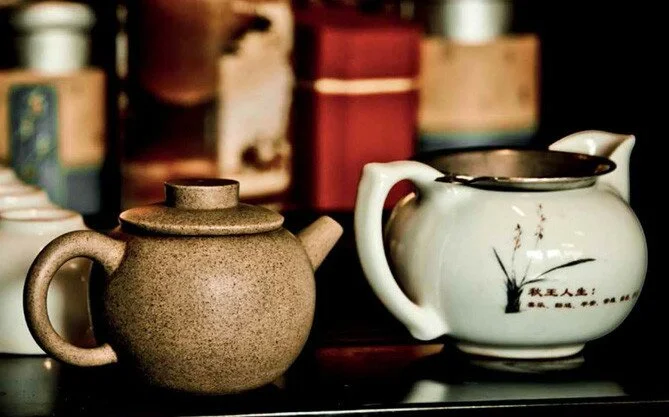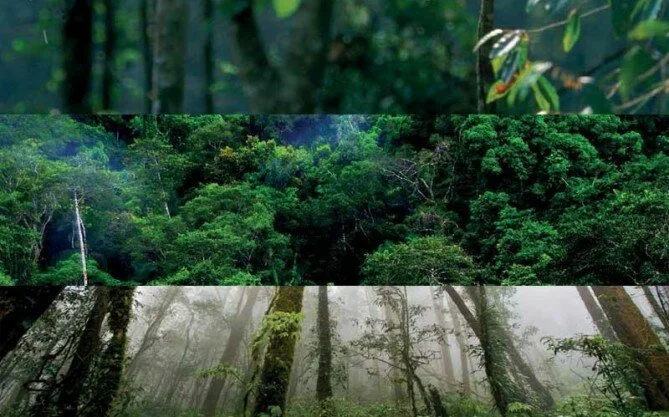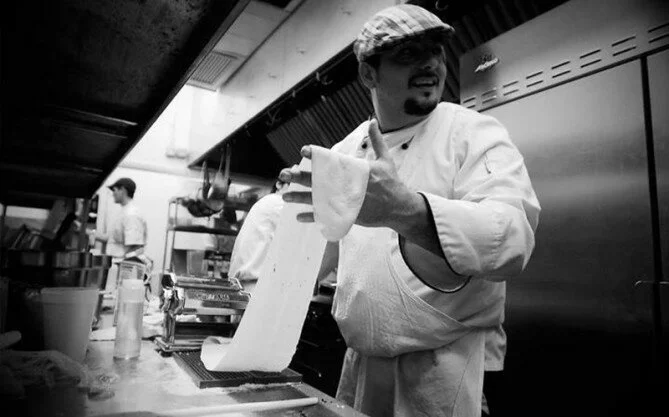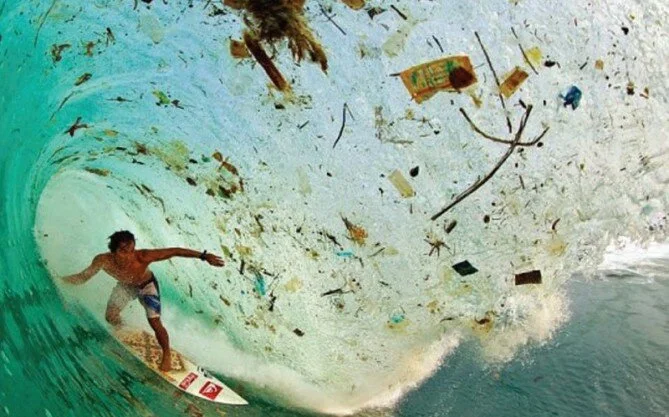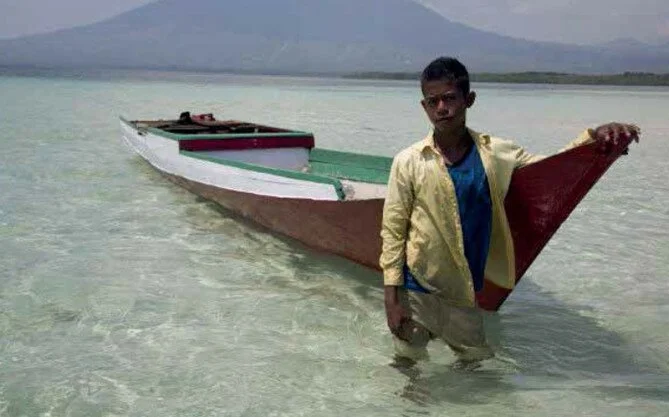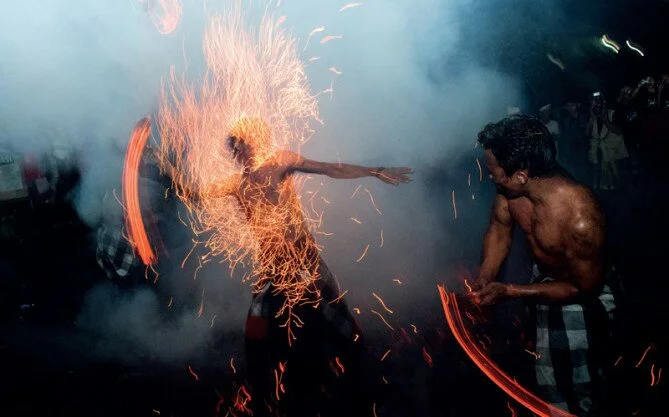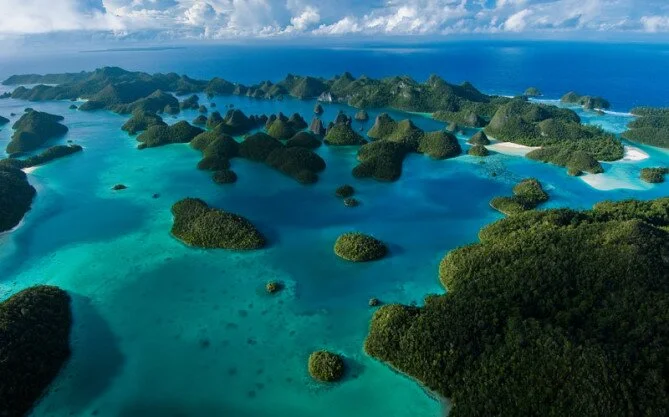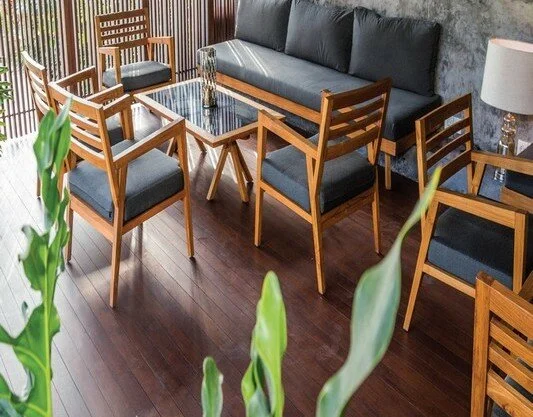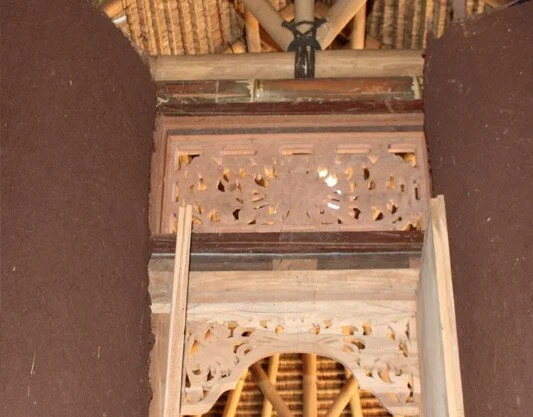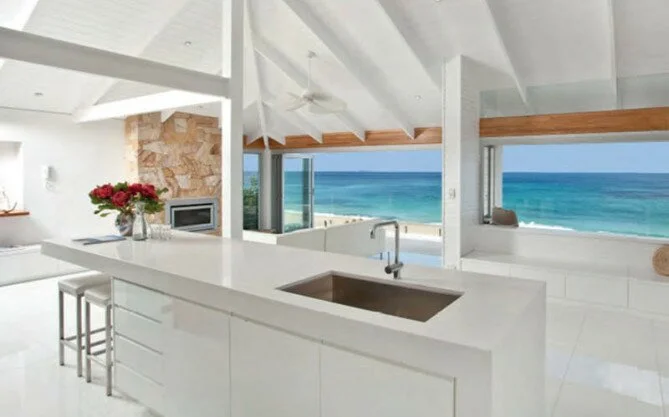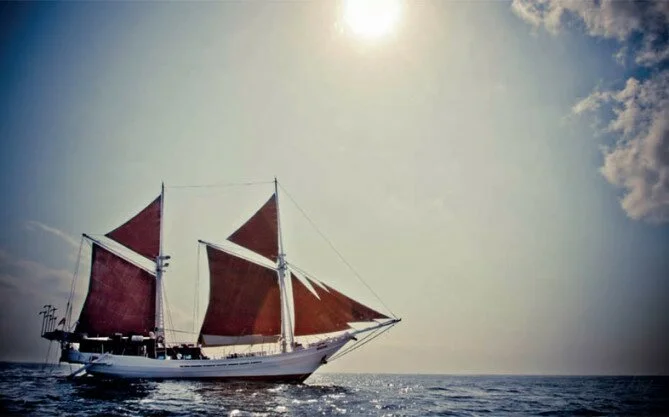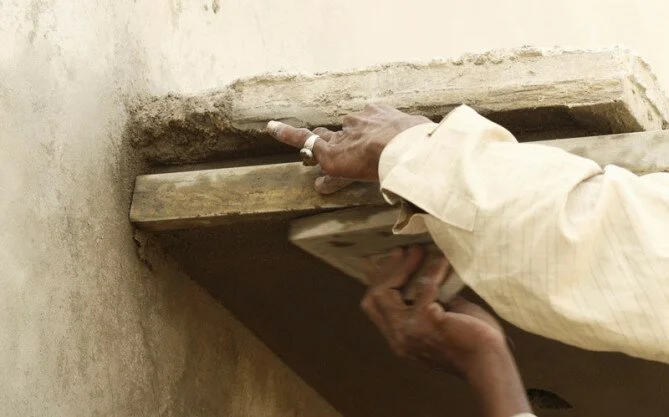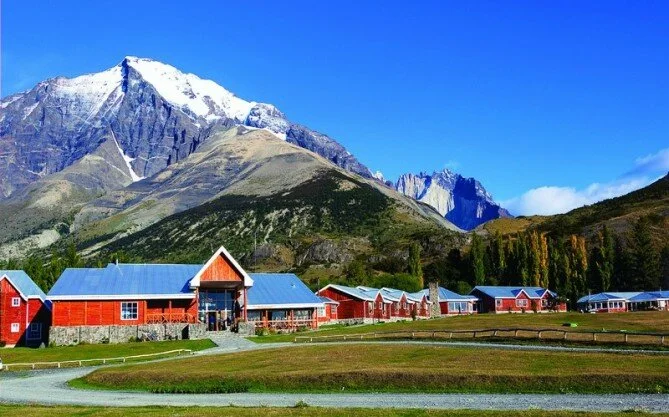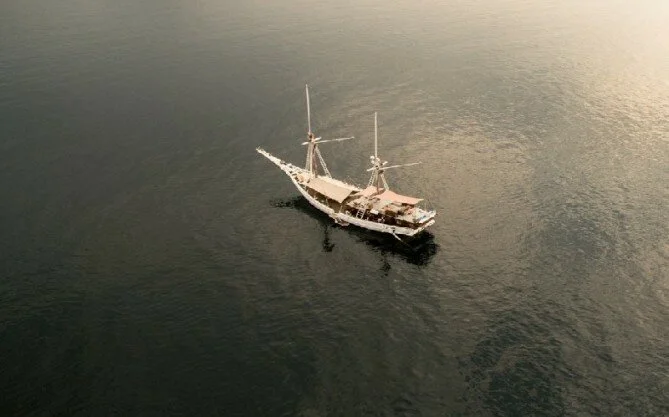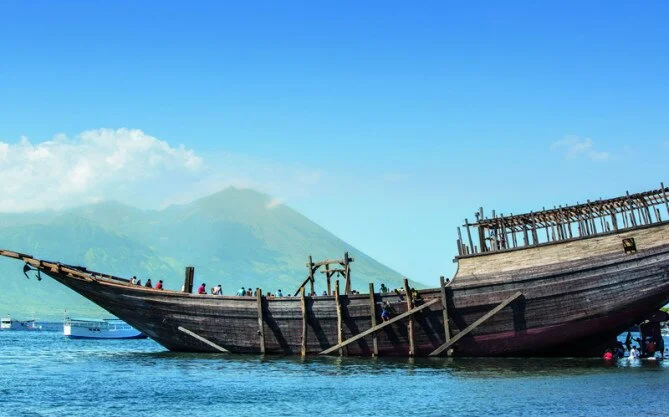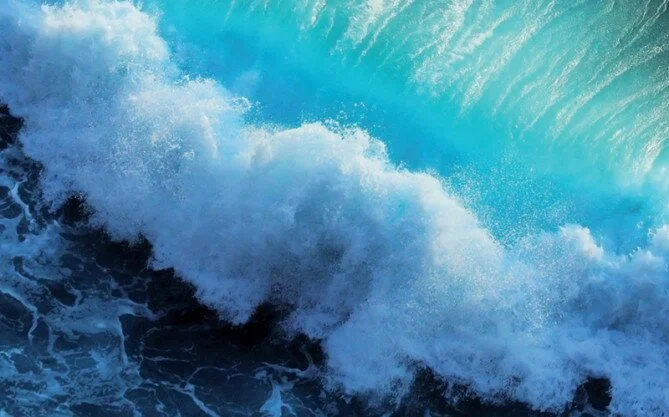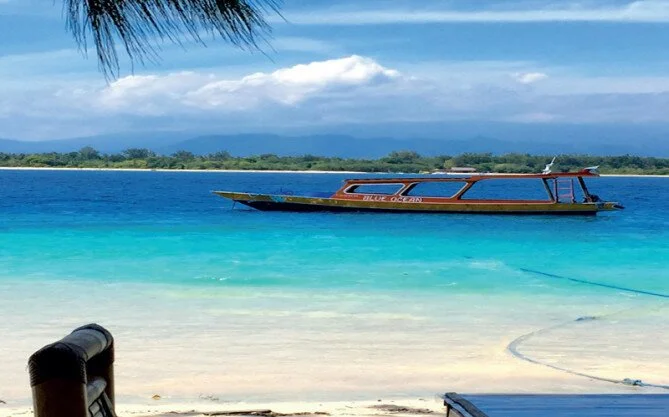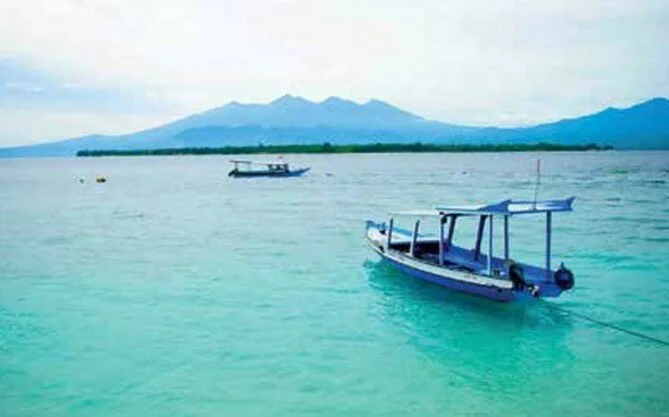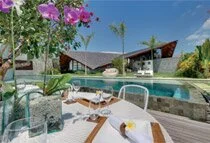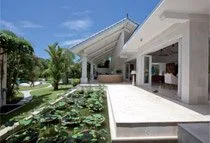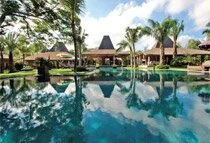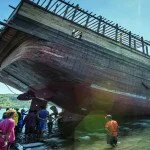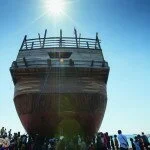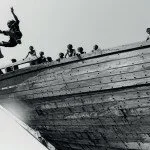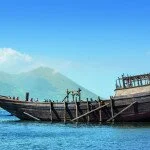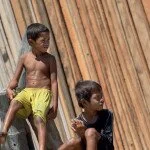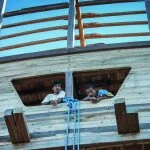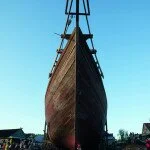Almost a year since Mt Sangeang spectacularly erupted, I am desperately seeking shade from the sun on a blacksand beach within striking distance of the still-active volcano. Separated only by a narrow shipping channel, the 1800-metrehigh volcanic island of Pulau Sangeang towers over the tiny shipbuilding village of Sangeang Wera – a Buginese settlement in northeast Sumbawa. Here the men build wooden boats along the scruffy shores, while the village women weave brightly coloured textiles. Today, something huge is happening in Sangeang Wera, and just for once, the nonchalant volcano fails to dominate the scene.
On this auspicious day, when the king tide is expected to reach its peak at 1pm, all eyes are on ‘Al Fatah,’ an enormous pinisi boat that appears to soar even higher than the volcano. For today, after 18 months of handcrafted labour by a handful of master boatbuilders, Al Fatah is ready to be launched. Fashioned from ironwood, 30 metres long with a 22-metre keel, 11 metres wide and weighing around 150 tonnes, the bulk carrier is the biggest boat ever to have been built in this village. She was commissioned by six wealthy brothers at the cost of US $250,000.
The brothers and the builders are highly respected in the community and every member of the village is involved in an extraordinary manual operation to get the boat into the water. Vertical supporting beams have been positioned on either side of Al Fatah, logs have been laid perpendicular to the keel and planks have been laid parallel to form a slipway, which has been liberally smeared with thick, heavy engine grease. “It will take three hours from the first pull until the boat reaches the water,” one of the builders informs us. “No one is getting paid, it’s a collaboration, people are literally pulling together to help each other.”
To show their appreciation, the brothers arranged for the slaughter of a small menagerie of cows, goats and chickens; yesterday the women cooked, and last night the whole village feasted. After dark the men gathered on board, and prayers were offered to Allah for a smooth launch and for the future safety of the vessel. In fact, the holding of boatbuilding rituals before launch are strictly adhered to. In an earlier ceremony, a hole was drilled at the midpoint of the keel, a crock of gold was placed in the hole and the drillings were placed in a bottle of coconut oil. The gold is to protect the boat from harm, and the oil is used as a medicine to be rubbed on the keel should there ever be any trouble at sea.
Aft of the keel, two hand winches have been prepared and ten men on each side are tearing on the chains. A lengthy block of hardwood has been inserted under the base of the keel and another line of men are using it as a lever to rock the boat into position. A man on a megaphone – the ‘director of operations’ – is shouting orders. After a few minutes the boat makes its first move towards the sea, and tiny distance of less than a metre but she’s heading in the right direction. Out comes a man with a chainsaw, a plank at the back end of the sled is cut away, and the procedure starts again. Twenty minutes later, the boat moves another half-metre, and so it goes on, slowly, slowly, each time to a resounding cheer.
Suddenly there is a loud bang, and a shout, everyone leaps back, and I can feel the communal dismay hanging heavily in the hot sultry air. The winch has broken; after a failed attempt to repair it, we are told that a new one must be brought over from the island of Sangeang. The women see this a cue to serve lunch, more rice, goat satay, beef stew and water is distributed first to the residents and guests of the village, including us, and some government officials who have driven over from Bima for a photo opportunity. A new winch arrives, it’s put into place and the procedure begins again, the boat moves another metre.
Peak tide is approaching, the sun is directly overhead, the heat is relentless, and everyone is seeking shade. Another metre, another terrifying bang, and the new winch breaks. This time we are informed that a replacement will have to be flown over from Surabaya. The sun is obscured by a cloud of disappointment, but a welder appears on the scene, and half an hour later, the winch is repaired and the boat is on the move again. By now, however, the window of high tide opportunity has gone, and the man on the megaphone announces “enough for today.”
Pinisi vessels – a masterpiece of Bugis- Makassar design – are exceptionally strong, and are famous for their ability to break through high waves and cover great distances. A few, such as the Katharina, from SeaTrek Sailing Adventures, which cruised into the bay to watch the launch, are built for the tourist industry and fitted out with luxury cabins and sundecks. Most, such as Al Fatah with her 800-tonne cargo capacity, are built as freight carriers for transporting rice, perhaps, or even palm or cement. Amazingly they are still built the traditional way; the master boatbuilders do not have special engineering training. They don’t need architectural drawings or complicated technical calculations to determine the quantity of materials needed.
Using a method that would be unworkable in mainstream shipbuilding, the builders first lay the keel before the stem and sternpost are erected. The side planks are then assembled before the ribs are added, yet the builders can still accurately establish the boat’s balance so it will float perfectly when launched into the water. “We just go with our instincts based on our vision and judgment,” said the master builder, “our eyes and our feelings guide us when we’re building a boat.”
The next morning, everyone is back on the beach. Everyone, apart from me, along with the captain of a tugboat and his crew, brought in to bring some serious horsepower to the procedures. I have boarded the tug to watch the launch from offshore – yes, everyone is confident it will happen today. All the boat needs now is the momentum to slide the last 20 metres into the sea. One major pull should do the trick. A rope is attached, the tug moves into position, the engine strains, the rope breaks. The exercise is repeated, while on either side of Al Fatah, a gang of men, women and kids haul on two parallel ropes; it’s like massive tug of war, except that everyone is pulling and pushing in the same direction, with one common goal. Finally, after several more failed attempts, the behemoth vessel starts to slide, picking up speed, unstoppable now, upright and perfectly balanced, faster and faster until she hits the water with a colossal splash and a mighty wave of triumph before smoothly gliding to a buoyant halt.
A year ago, Mt Sangeang may well have spectacularly erupted, but that particular event has paled into insignificance compared to the triumphant eruption of joy from the elated villagers on the neighbouring shore. R.L.




